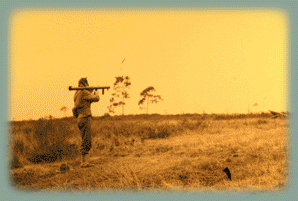 Across the country, the Department of Defense acquired properties, often during times of war, to use for military training, testing and demonstrations. When no longer needed, many of these properties were cleaned up according to the best practices available at the time and then transferred to other owners such as private individuals or other government entities. These Formerly Used Defense Sites can range from privately owned farms to National Parks. They also include residential, industrial and educational properties. The Department of Defense is committed to protecting people and the environment and improving public safety by cleaning up these sites if hazards from the former military operations remain.
Across the country, the Department of Defense acquired properties, often during times of war, to use for military training, testing and demonstrations. When no longer needed, many of these properties were cleaned up according to the best practices available at the time and then transferred to other owners such as private individuals or other government entities. These Formerly Used Defense Sites can range from privately owned farms to National Parks. They also include residential, industrial and educational properties. The Department of Defense is committed to protecting people and the environment and improving public safety by cleaning up these sites if hazards from the former military operations remain.
Formerly Used Defense Sites are properties that were under the jurisdiction of the Secretary of Defense and owned by, leased by, or otherwise possessed by the United States (including governmental entities that are the legal predecessors of the Department of Defense or its components) that were transferred from the Department of Defense prior to October 17, 1986. The Defense Environmental Restoration Program-Formerly Used Defense Sites was established to evaluate and, if necessary, to remediate these properties. The Army is the lead agency for the Formerly Used Defense Sites program, and the Corps, on behalf of the Army and the Department of Defense, is the executing agent, which is responsible for environmental restoration of all Formerly Used Defense Sites.
Congress passed the Comprehensive Environmental Response, Compensation, and Liability Act, also known as Superfund, in 1980 and the Superfund Amendments and Reauthorization Act in 1986. These laws give the Corps the authority for certain cleanup activities and dictate the process we must follow. The Corps conducts investigations to determine the potential risk to people and the environment from the military's use of the property. Public involvement and community participation are important components of the process. We partner with stakeholders throughout the process, including congressional representatives, state and local governments, regulatory and environmental agencies, and affected property owners.